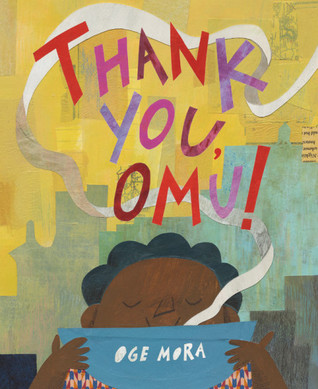
If you’re a picture book aficionado, you’ve probably already seen Oge Mora’s award-winning debut Thank You, Omu! If you haven’t, be sure you check it out from your library ASAP. It’s well worth the read.
But that’s not the book we’re here to talk about today! Today we’re looking at how Mora uses luscious language to bring her second picture book, Saturday, to life.
First, a little background…
Saturday follows Ava and her mother through their weekly routine of spending their favorite day of the week together. Every Saturday, they go to story time, the salon, the park, and somewhere extra special in the evening. But this Saturday, nothing goes according to plan, and it looks like the day is destined to be a disaster.
So, what’s so special, so splendid about Saturday?
Many things really. The illustrations are beautiful – Mora’s colorful collages manage to be childlike and artful at the same time. The story is relatable – What child hasn’t had a special day upended by life’s unfortunate circumstances? The themes of resilience and togetherness are compelling, and the message rings true: Our favorite days aren’t especially special because of what we do but because of whom we are with.
Now let’s teach!
Let’s look at some of the words Mora uses in the first few pages.
This morning Ava and her mother were all smiles. It was Saturday! Because Ava’s mother worked Sunday, Monday, Tuesday, Wednesday, Thursday, and Friday, Saturday was the day they cherished.
On Saturdays they zipped to the library…they lounged in salon chairs…they picknicked in the grass…
And here are a few of the other rich words you’ll find as you keep reading: wailed, reassured, sobbed, boo-hooed, chirped, and crumpled. Each of these colorful words fits the story just right, and they also keep the story from feeling bland.
Here are your two lessons!
Lesson #1: Inferring Word Meaning Using Context Clues
Some of these words might be new to young students. Most of their definitions can be inferred from the context.
Before reading to your class or your children, go through the book and select a few words (3 or 4) that you think will be unfamiliar or “new.” Make a list and look up each word in a dictionary to find a definition that you can reference later.
To pre-assess, write each unfamiliar word on the board or read your list aloud. Ask students to say or write the definitions of each word and use each word in a sentence.
Next, read the story all the way through, encouraging students to listen for the “new” words as you read.
After reading the story in full, go back and reread the pages containing your words one at a time using the following questions to guide your discussion:
- What do you think the word (your word of choice) means?
- What clues helped you to understand the meaning of (your word)?
- What is the dictionary definition of (your word)? How closely did our definition match the dictionary definition?
- How could we use (your word) in a new sentence? (Use think-pair-share here to involve all students in using the new word!)
To assess, give students an “Exit Ticket” asking them to use each new word in a sentence.
Lesson #2: Choosing Colorful Words Using Mentor Texts
Before reading, go through and replace Mora’s colorful words with simple words that mean the same thing.
For example…
This morning Ava and her mother were happy. It was Saturday! Because Ava’s mother worked Sunday, Monday, Tuesday, Wednesday, Thursday, and Friday, Saturday was the day they liked most.
On Saturdays they went to the library…they sat in salon chairs…they ate lunch in the grass…
To start the lesson, ask students to share as many ways they can think of to say “went” or “go” (e.g. We walked, skipped, hopped, sprinted, drove… to the library.). There are several ways you could document this, but here are just a few: write words students suggest on the board, give groups a chance to “compete” to see which group can come up with the longest list in three minutes, or have each student write their own list and then swap/share with a partner.
Next, read the story all the way through asking students to listen for “colorful” words.
After reading, have students share some of the words they heard.
Then, go back and share the example you prepared before the lesson and contrast it with the actual text found in the book.
Ask students which version they think sounds more interesting and why.
If students are not already familiar with a thesaurus, show them how to use a thesaurus to look up synonyms.
Instruct students to write 3-5 sentences about what they do on Saturdays. Then, have students go back and look for words they can replace with more detailed or specific synonyms. You can have students work with a partner on this portion of the lesson or you can wait to have them share their original sentences and their improved sentences at the end of the practice session. During this time, work with individual students to informally assess for understanding and assist students who are struggling.
Finally, have students turn in an Exit Ticket with their “favorite” pair of original and improved sentences.
That’s all! Any questions? Feel free to send me a message or comment to let me know if you’d like any help bringing Saturday to your students!
Your Turn! What day of the week do you cherish? Why?
